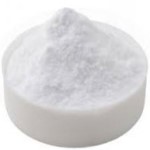Calcium Sulfate Dihydrate Hemihydrate Anhydrous SDS of Suppliers Exporters, Manufacturers
Calcium Sulfate
CAS Number: 7778-18-9, 10034-76-1, 7778-18-9 Dihydrate Hemihydrate Anhydrous USP BP Ph Eur FCC Food Food Grade Suppliers Exporters, Manufacturers

Please visit Main Page of Calcium Sulfate Dihydrate Hemihydrate Anhydrous USP BP Ph Eur FCC Food Food Grade Manufacturers.
Calcium Sulphate Sulfate Dihydrate Hemihydrate Anhydrous
SDS, Safety Data Sheet
MSDS Sheet 10-May-22
Section 1: Chemical Product and Company Identification
Product Name & Other Names: Calcium sulfate or Calcium sulphate.
CAS #: 7778-18-9 Anhydrous, 10034-76-1 Hemihydrate, 10101-41-4 Dihydrate.
EINECS EC number: 231-900-3
Relevant uses and uses advised against (if any): Industrial use only.
Supplier: As per letterhead.
Section 2: Hazards Identification
GHS, Globally Harmonized System Classification in accordance with 29 CFR 1910
Classification according to Regulation (EC) No 1272/2008
Not a hazardous substance or mixture according to Regulation (EC) No. 1272/2008.
This substance is not classified as dangerous according to Directive 67/548/EEC.
Labeling according to GHS & Regulation (EC) No 1272/2008
GHS Label Elements NONE |
Signal Word: None
Precautionary statements:
P261: Avoid breathing dust/fume/gas/mist/vapors/spray.
P262: Do not get in eyes, on skin, or on clothing.
P281: Use personal protective equipment as required.
P302+P352: IF ON SKIN: Wash with plenty of soap and water.
P304+P340: IF INHALED: Remove victim to fresh air and keep at rest in a position comfortable for breathing.
P305+P351+P338: IF IN EYES: Rinse cautiously with water for several minutes. Remove contact lenses, if present and easy to do. Continue rinsing.
P337+313: If eye irritation persists get medical advice/attention.
Section 3: Composition and Information on Ingredients
Product Name & Other Names: Calcium sulfate or Calcium sulphate.
CAS #: 7778-18-9 Anhydrous, 10034-76-1 Hemihydrate, 10101-41-4 Dihydrate.
EINECS EC number: 231-900-3
Section 4: First Aid Measures
Always seek medical advice after the first aid treatment.
Skin: Wash exposed area with soap and water.
Eyes: Wash eyes with plenty of water for at least 15 minutes, lifting lids occasionally. Seek Medical Aid.
Inhalation: Remove to fresh air. If not breathing, give artificial respiration. If breathing is difficult, give oxygen.
Ingestion: If swallowed, induce vomiting immediately after giving two glasses of water. Never give anything by mouth to an unconscious person.
Section 5: Fire and Explosion Data
Flammability of the Product: Non-flammable.
Auto-Ignition Temperature: Not applicable.
Flash Points: Not applicable.
Products of Combustion: Oxides of sulfur and calcium.
Fire Hazards in Presence of Various Substances: Not applicable.
Fire Fighting Media and Instructions: Use water spray, alcohol-resistant foam, dry chemical, or carbon dioxide.
Extinguishing Media Not recommended: None specified.
Special Remarks on Fire Hazards: Calcium sulphate hemihydrate or anhydrous mixed with phosphorus will ignite at high temperatures. When primed at high temperature with potassium nitrate-calcium silicide mixture, calcium sulfate mixed with excess red phosphorus will burn.
When heated to decomposition it emits toxic fumes of oxides of sulfur and calcium.
Special Remarks on Explosion Hazards Many metal oxo-compounds (nitrates, oxides, and particularly sulfates) and sulfides are reduced violently or explosively (undergo a thermite reaction) on heating an intimate mixture with aluminum powder to a suitably high temperature to initiate the reaction. A violent or explosive reaction can occur upon heating when calcium sulfate is mixed with aluminum powder. Containers may explode when heated.
Extinguishing Media Not recommended: Avoid using solid water jet as it may scatter the fire.
Special Information: In the event of a fire, wear full protective clothing and NIOSH-approved self-contained breathing apparatus with full face piece operated in the pressure demand or other positive pressure mode. At elevated temperatures under fire conditions, it may produce toxic or irritating fumes. Fire-extinguishing work is done from the windward and the suitable fire-extinguishing method according to the surrounding situation is used. Uninvolved persons should evacuate to a safe place.
Section 6: Accidental Release Measures
Personal precautions, protective equipment, and emergency procedures: Ventilate area of leak or spill. Avoid breathing dust/fumes/gas/mist/vapors/spray. Use individual protective equipment (waterproof boots, suitable protective clothing, safety glasses, etc.). Do not approach facing the wind.
Environmental precautions: Do not let the product enter drains, soil, or water sources.
Methods and materials used for containment cleanup procedures and Storage: Contain spilled material. Cover with an inert, non-combustible absorbent material, (e.g., sand, earth, diatomaceous earth, vermiculite). Vacuum or sweep-up and remove to an approved disposal container. Finish cleaning by spreading water on the contaminated surface and allow to evacuate as per law. Avoid contact with moisture.
Section 7: Handling and Storage
Precautions for safe handling: Apply according to good manufacturing and industrial hygiene practices. Ensure proper ventilation. In case of insufficient ventilation, wear suitable respiratory equipment. Wash thoroughly after handling. Do not drink, eat, or smoke while handling. Avoid contact with skin, eyes, and clothing. Minimize dust generation. Avoid breathing dust/fumes/gas/mist/vapors/spray. Use individual protective equipment (waterproof boots, suitable protective clothing, safety glasses, etc.). Prevent any contact with hot surfaces.
Conditions for safe storage, including any incompatibilities: Store in cool, dry, and ventilated area away from heat sources and protected from sunlight in tightly closed original container. Keep air contact to a minimum. Store protected from heat, sparks and ignition sources and incompatible materials. Do not store with incompatible materials like strong oxidizing agents and acids. Hygroscopic. Avoid moisture.
Section 8: Exposure Controls/Personal Protection
Engineering Controls: Use process enclosures, local exhaust ventilation, or other engineering controls to keep airborne levels below recommended exposure limits. If user operations generate dust, fume, or mist, use ventilation to keep exposure to airborne contaminants below the exposure limit.
Exposure Limits:
TWA: 15 (mg/m3) from OSHA (PEL) [United States] Inhalation Total.
TWA: 5 (mg/m3) from OSHA (PEL) [United States] Inhalation Respirable.
TWA: 10 (mg/m3) from ACGIH (TLV) [United States]
TWA: 10 (mg/m3) [United Kingdom (UK)] Inhalation Total.
TWA: 4 (mg/m3) [United Kingdom (UK)] Inhalation Respirable.3
Consult local authorities for acceptable exposure limits.
Ventilation System: A system of local and/or general exhaust is recommended to keep employee exposures as low as possible.
Personal Respirators (NIOSH Approved): For conditions of use where exposure to dust or mist is apparent and engineering controls are not feasible, a particulate respirator may be worn.
Skin Protection: Wear protective gloves and clean body-covering clothing.
Eye Protection: Use chemical safety goggles and/or full-face shield where dusting or splashing of solutions is possible. Maintain eye wash fountain and quick-drench facilities in work area.
Other Control Measures: Maintain good housekeeping in work area. Handle in accordance with good industrial hygiene and safety practice.
Section 9: Physical and Chemical Properties
Appearance: White solid. Hygroscopic crystals or lumps or powder.
Odor: Odorless.
Odor threshold: Not applicable.
pH: No data found.
Relative density: No data found.
Melting point/freezing point: No data found.
Initial boiling point and boiling range: No data found.
Flash point: No data found.
Auto-ignition temperature: No data found.
Decomposition temperature: No data found.
Upper/lower flammability or explosive limits: No data found.
Vapor pressure: No data found.
Vapor density: No data found.
Evaporation rate: No data found.
Flammability (solid, gas): No data found.
Partition coefficient: n-octanol/water: No data found.
Solubility(ies): Very slightly soluble in cold water.
Viscosity: No data found.
Molecular Weight: 172.17 for dihydrate, 145.15 for hemihydrate and 136.14 for anhydrous
Molecular Formula: CaSO4-2H2O for dihydrate, CaSO4-0.5H2O for hemihydrate and CaSO4 for anhydrous.
Section 10: Stability and Reactivity Data
Stability: Stable under ordinary conditions of use and storage.
Conditions of Instability: Incompatible materials
Incompatibility with various substances: Reactive with oxidizing agents, acids.
Corrosivity: Non-corrosive in presence of glass.
Special Remarks on Reactivity: Hygroscopic; keep container tightly closed. Loses waters at 163 C. Incompatible with Diazomethane, aluminum, magnesium, phosphorous.
Polymerization: Will not occur.
Section 11: Toxicological Information
Toxicity to Animals:
LD50 (Oral) Rat 3,920 mg/kg
LC50: Not available.
Mutagenic Effects: No data found.
Teratogenic Effects: No data found.
Developmental Toxicity: No data found.
Reproductive Effects: No data found.
Section 12: Ecological Information
Ecotoxicity:
EC50 >79 mg/l Daphnia 48 hours
EC50 >790 mg/l Micro-organism 3 hours
Acute LC50 >1970 mg/l Fish 96 hours
Persistence and Degradability: No data found.
Mobility: No data found.
Bioaccumulation/ Accumulation: No data found.
Results of PBT and vPvB assessment: No data found.
Section 13: Disposal Considerations
Waste Disposal: Waste must be disposed of in accordance with federal, state, and local environmental control regulations.
Section 14: Transport Information
DOT USA, TDG Canada & ADR/RID Europe: Not controlled.
IMDG/IMO: Not controlled.
IATA/ICAO: Not controlled.
Section 15: Other Regulatory Information
USA Regulations:
SARA 311/312 Hazards: See section 2.
California Prop. 65 Components: This product does not contain any chemicals known to State of California to cause cancer, birth defects, or any other reproductive harm.
Section 16 - Additional Information
DISCLAIMER: The information and recommendations set forth herein are presented in good faith and believed correct as of the date hereof. It is compiled from various sources, and it is not necessarily all inclusive nor fully adequate in every circumstance. In addition, these suggestions should not be confused with nor followed in violation of applicable laws, regulations, rules, or insurance requirements applicable. This SDS MSDS sheet is intended only as a guide to the appropriate precautionary handling of the material by a professionally trained person using this product. Individuals receiving the information must exercise their independent judgment in determining its appropriateness for a particular purpose. This shall not constitute a guarantee for any specific product features and shall not establish a legally valid contractual relationship. In no case shall our company be liable to loss or damages by the product user.
Please visit Technical Data Sheet of Calcium Sulfate Dihydrate Hemihydrate Anhydrous USP BP Ph Eur FCC Food Food Grade Suppliers.
Calcium Sulfate Dihydrate Hemihydrate Anhydrous CAS Number 7778-18-9, 10034-76-1, 7778-18-9 & Calcium Disodium EDTA or Sodium Calcium Edetate USP NF FCC Food Grade CAS Number 62-33-9 or 23411-34-9 Supplier Exporter, Manufacturer:
Annie Chemie P Ltd
Mumbai 4000010, INDIA
With Agents and offices in UAE, USA, Europe.
e-mail: info@anniechemie.com
Copyright and Usual Disclaimer is Applicable.
May 31, 2025
Exporters to USA, Canada, UK, Europe, UAE, Nigeria, Algeria, Turkey, Mexico, Brazil, Chile, Argentina, Australia, Dubai etc.
Perfection is made up of small things and that is a big thing.
